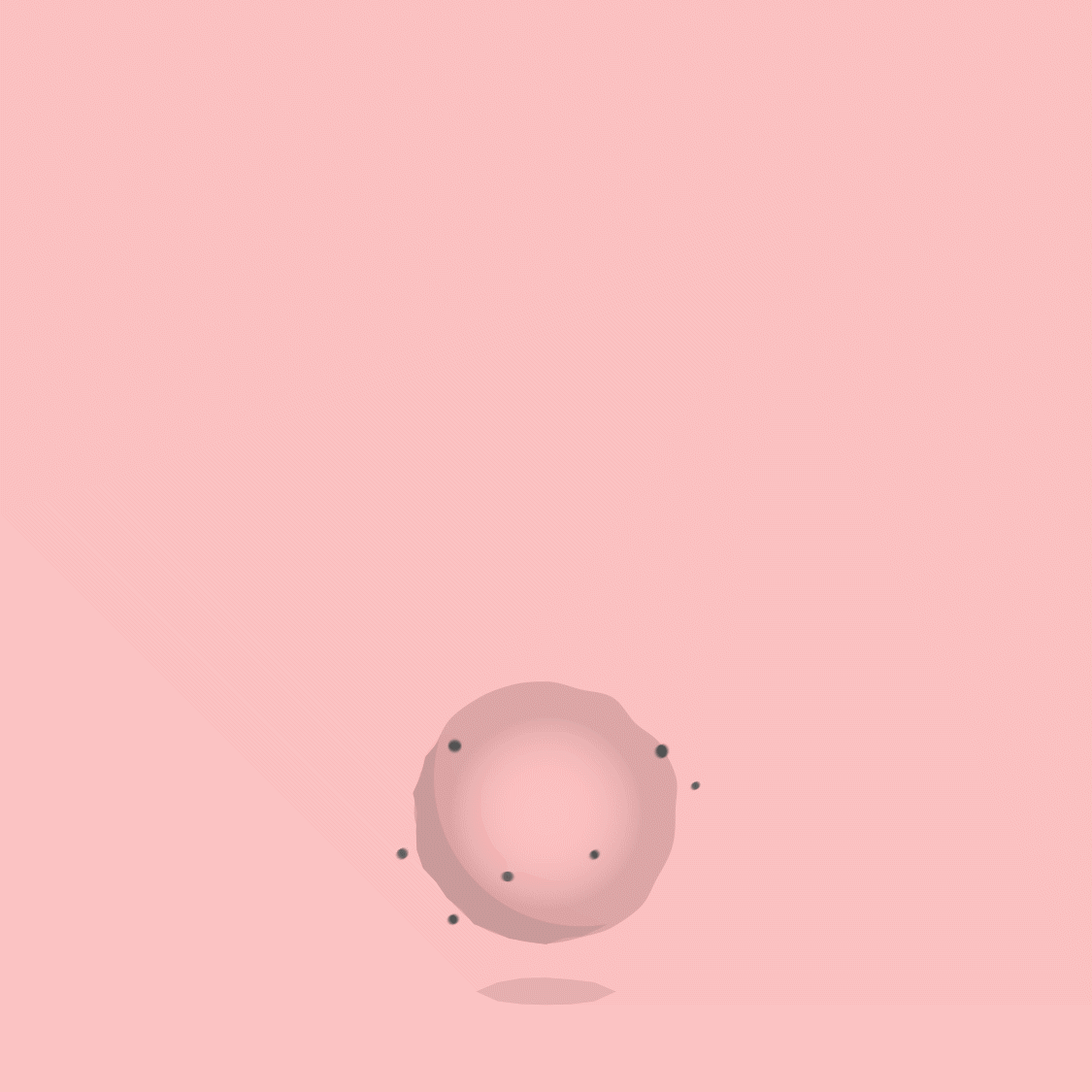Data for
Change
'Explore ways to engage the public in air pollution, drawing a relationship between the data that outlines the issues and the public'
Project Plan
With this project I wanted to implement and attempt to stick to a defined 'plan' or schedule. I feel a lack of this in previous projects has often lead to projects that either focus too heavily on the first idea generated and gradually lose steam as time passes, or projects where too long in spent on research and idea generation and no end project is ever really produced.
Below is my initial week by week plan made on 12/03/19. I will attempt to update this, ideally, week by week, and then post a revised version with notes and reflections at the end of the project.

Week One
Research and References
Posavec, S (2014) Air Transformed: Better with Data Society Commission
(Available at: https://www.stefanieposavec.com/airtransformed/) Accessed on: 12/03/19
This project attempts to raise awareness of air pollution by appealing to the human senses, touch and feel. Air pollution is often unseen and this can result in the issue being overlooked or neglected.
Goatley, W (2018) Atmospheric Disturbances (available at: http://www.wesleygoatley.com/atmospheric-disturbances/) Accessed on: 12/03/19
Some interesting quotes from this piece:
'Data on this topic should therefore be understood as being part of a wider investigation into air pollution, rather than the sole proof of it'
Revell, T. Goatley, W (2016) Watching Mephitic Air (Available at: https://www.tobiasrevell.com/Watching-Mephitic-Air) Accessed on: 12/03/19
I feel this project is visually very appealing and when the reasoning/intentions are understood very effective as a piece of abstract data visualisation, however I feel that something along this route would not really be applicable to the current project. Specifically with the intentions laid out by Rosie and the brief. The briefing was to try and encourage engagement in a topic that appears to be very difficult to work with. I feel abstract visuals would possibly not be a successful way of doing this.
C+arquitectos/In The Air (2017) Yellow Dust (Available at: http://yellowdust.intheair.es/) Accessed on 13/03/14
Similar to that of Watching Mephitic Air, this project is an more abstracted visualisation of data. Although a little more interactive than Watching Mephitic Air, again I feel a project in this style would be not be successful in increasing engagement.
Chalabi, M (2018) Seven endangered species that could (almost) fit in a single train carriage
(Available at at: https://www.theguardian.com/environment/gallery/2018/sep/17/endangered-species-on-a-train) accessed on 13/03/19
I think that Mona's visualisations are very applicable to this brief and what Rosie outlined the Imperial College is looking for. They are playful and visually appealing, but most interestingly add a easily relatable 'scale' to the data. Majority of individuals will have a rough idea how big a tube or train carriage is. Also although the data in this particular example is related to the serious issues around animal extinction, it does well to avoid another overbearing feelings of guilt or sadness that certain types of campaigns around these issues often do.
Various Contributors (2013) Uncomfortable User Experience (accessed on 13/03/19)
This article references how various types of 'discomfort' can be integrated into user experience, mainly using examples around roller coaster rides and electric shock games. I do not wholey agree with this a method of design (possibly just personal preference. I don't like horror films, roller coasters or being electrocuted) but I understand the thinking and how discomfort can heighten certain senses and make a user more receptive. I think if this method was to be applied to this project it would have to be very mild and far removed from the examples listed in the article.
Hall, P (No date) Critical visualisation in Deisgn and the elastic mind.
Available at https://peterahall.com/pdfs/Hall_critviz.pdf (Accessed on 14/04/2019)
Interesting crit on Data Viz and how often, attempting to visualise large amounts of data, that regularly changes (like air pollution data) can become complex and the original intentions can be lost.
Quote: "Getting people to think about what kind of story they want to tell, or what kind of narrative they're trying to pull out, and work backwards from there"
Hall references a data viz project around criminal activity, where it is often the case to map where crimes were committed. The project instead mapped where the household of those incarcerated were located.
Jeremikenko. N (2010) The Art Of the Eco Mindset (Available at: https://www.youtube.com/watch?v=3GBrJiSMFu0) Accessed on: 14/03/19
Week Two
Chalabi. M (2018) “If it’s about farts, draw a butt for god’s sakes”: Mona Chalabi tells us how to illustrate data (Available at:https://www.itsnicethat.com/articles/mona-chalabi-illustration-internationalwomensday-080318) Accessed on: 21/03/19
"A big part of my philosophy is that computer-generated images overstate certainty, my hand-drawn graphics show the real margin of error in the numbers while reminding people that a human was responsible for the data gathering and analysis."
Cavillo N. Garnett (2019) Data intimacies: Building infrastructures for intensified embodied encounters with air pollution (Available at: https://journals.sagepub.com/doi/full/10.1177/0038026119830575 (accessed on 21/03/19)
An article on the Yellow Dust project referenced in Week One. It explores how through 'Data Intimacies' a project can potentially be more successful in producing engagement and action from an individual.
I feel like this project, a lot of interactive installations miss the mark. This project was focused around observations of peoples reactions and engagement to it, and was not intending to strongly educate people on air pollution data, although that was the data at the source of the project.
Before beginning any idea generation I wanted to explore campaigns and already already available around Air Pollution, so i visited a number of different websites and tried out the top 4 Air Pollution Mobile Apps on the Apple App store. I was actually expecting a lot more existing work around clean air campaigns and visualisations but I did not actually find that much.
The Campaign that immediately comes to mind (possibly due to it being relatively recent) is the #cleanair posters displayed around London. Although this campaign is visually striking by using light methods of 'distress' mentioned in earlier research, due the language used, the onus of the issue is actually directly on one individual, The Mayor of London (possibly intentionally for political/publicity reasons). But to me this appears to really hamper the overall message of this campaign. There is no reference or indication as to what an individual viewer of this campaign can to help the issue, only to find out what else the 'Mayor of London' is doing/planning.
Although this campaign is a good example of trying to visualise a 'scale'/relatability to the issue of air pollution, I feel it misses the mark of encouraging engagement and action due to its overall tone.


Thought process so far:
This is clearly a hard topic to try and generate engagement around. There has been some interesting work around it, but mainly conceptual based installations and projects, which I believe is possibly not the best the try and encourage that engagement. I feel the most applicable work is by Mona Chalabi and the visuals from the #CleanAir campaign. 'Scale' allows for more relatability to an issue and the accompanying data, which often appears to be presented in a overly complex way(e.g. the apps shown above). I believe relability needs to be at the heart of this project as I feel that will improve understanding and as a result increase engagement.
The air pollution data available from London Air and other sources does not appear to be of that much use. London, on the whole is visualised as 'green' meaning 'safe levels' of pollution, and I think this is possibly having the opposite effect of potential users of the data as it appears everything is 'safe' and normal.
I realise and acknowledge that I am not going to 'fix' air pollution, and that whatever I create will more than likely have some flaws that can be picked at. Therefore I am going to focus my project around relateability which is influenced by Air Pollution data as opposed to built on it.
Dragicevic P, Jansen, Y (No date) List of physical Visualisations (Available at: http://dataphys.org/list/) Accessed on 26/03/19
http://dataphys.org/list/stop-motion-animation-of-physical-bar-charts/
http://dataphys.org/list/electron-density-contours/
http://dataphys.org/list/frankfurt-streetcar-load/
http://dataphys.org/list/city-populations/
http://dataphys.org/list/garden-of-eden/
http://dataphys.org/list/actuated-prism-map-of-italy/
Cecil, N (2018) Revealed: London's high street hotspots blighted by toxic air
(Available at: https://www.standard.co.uk/news/london/revealed-londons-high-street-hotspots-blighted-by-toxic-air-a3868741.html) Accessed on 26/03/19
"Pollution should not breach 200 micrograms of nitrogen dioxide (NO₂) per cubic metre of air an hour on more than 18 occasions a year, according to the EU rules."
https://crossriverpartnership.org/projects/clean-air-walking-routes
Could potentially focus project around the amount of cities world wide who fail to comply with legal air pollution laws. specially London and how many times a year it fails.
3D Mapping of air pollution
App Analysis
The four apps I looked at displayed some nice visuals, however their overall usability and 'engagement' factor is very poor. Air pollution data/statistics are obviously very complex and to attempt to display them accurately whilst also making them accessible to the general public appears incredibility difficult.
What does this mean?
Again returning back to the idea of 'scale' and relatability, I feel like an attempt to visualise data in the way the apps above have would be ineffective.
Week Three
If I could incorporate live air pollution data into a 3D Map similar to that of google maps, I feel this would be a more effective way to visualise air pollution than pixelated squares on a 2D map.
This could possibly be used to indicate and show a record of how often boroughs in London exceed the legal limited of EU air pollution laws.
Flaws: Although I feel this would be a effective tool in communicating air pollution and its scale, It does not effectively address the issues around public engagement as it is essentially a restyling of existing visualisations. The 3D mapping of air pollution would have to offer something in addition to pure visuals.
Air Pollution Tamagotchi
Taking the concept of a Tamagotchi, and applying it to air pollution. This idea would be focused around 'tracking'(not in a bad way) an individuals daily movements and the air quality they are exposed to.
An individual would be responsible for an avatar or character, that would respond to air quality. For example, if a long walk is taken down a busy road high in pollution, their avatar would become 'dirty' or or take on ailments that air pollution contributes too.
The theory behind this idea is to encourage engagement around air pollution and it's issues, but not in an overly aggressive or overbearing way. I feel like the idea of a external 'character' or avatar would reduce feelings of apathy towards pollution and it's effects as it is not DIRECTLY about an individual (but really is) The negative or positive effects of air pollution your avatar is exposed to are always applicable to the user and their health.
Stage One:
I need to track my own exposure to air pollution and monitor spikes and changes. This will help me to create some idea's around 'scale', and how it could potentially be applied to a potential avatar or character.
I think I want my avatar and character to be abstracted from an animal or take any kind of human form.
Research to carry out: What do people empathise with? How to build empathy through characters
Week Four
Not much progress was made during this week.
Week Five
Project build:
I wanted to try and visualize the more toxic and what is considered more dangerous pm.25 matter, but unfortunately the London Air website which I am using for historical air pollution data does not have any monitoring data for this type of particulate matter in the location I have been. Therefore I am using PM10.00 data instead.
Below is the data from 3 days in London, charting the three closing air monitoring stations to the places I visited.

Scale:
Below is a chart taken from:
https://uk-air.defra.gov.uk/air-pollution/daqi?view=more-info&pollutant=pm25#pollutant
I am going to use this chart as the base for my 'scale', I can then match this chart and scale up to my three day 'journey' around London, this can then be used and applied when to create the visualization I want to create
'European annual mean limit of 25 micrograms per cubic metre'

Journey details:
PM2.5 in April 2019
Sunday 07
8am: Farringdon Street: 56
10am: Bloomsbury: 63.5
3pm: Swiss Cottage: 44.2
8pm: Swiss Cottage: 53.1
Monday 08
8am: Farringdon: 47
10am: St Johns 31
5pm: Swiss Cottage 38
8pm: Bloomsbury: 45.3
10pm: Siwss Cottage 53.9
Tuesday 09
8am: Farringdon: 38
10am: ST Johns: 25
2pm: Farringdon: 27
5pm: Farringdon: 19
8pm: Bloomsbury: 14.6
Guest Workshop: Data for Mobile
References:
https://www.marketcafemag.com/product/market-cafe-magazine-issue-4
https://www.nytimes.com/interactive/2018/01/27/technology/social-media-bots.html
http://www.visualisingdata.com/
http://www.visualisingdata.com/2019/02/the-little-of-visualisation-design-part-61/
https://www.informationisbeautifulawards.com/
https://michelf.ca/projects/sim-daltonism/
https://projects.susielu.com/viz-palette
Paper Mock ups:

Creating Static Mockups:
Using Figma I created these digital mock ups. After working out the initial movement of the 'particle' I began styling and trying to create more fluid animations.
Animation and styling
Figma is not a tool for animation but it does have the ability to show basic movement in prototypes, so I used it to work out the basic animation of a slowly 'decaying' particle. Once I had this basic animation I began to work on styling on the particle. I am aiming for a balance between 'cartoon' and 'realistic', this is difficult to achieve, but I feel that the styling shown below is successful in capturing that type of styling. I also experimented with adding color to the particle, but this aspect needs to be considered further as the color needs to relate to and capture the users idea of air pollution.
Animation and flow




Animation and styling continued - After Effects
In order to gain a smother animation I decided to try my hand at After Effects. Using this tutorial: https://www.youtube.com/watch?v=A-nuMNe2hN0 I created the below GIF Animation.


Progression of my animation and UI Styling
As this was my first attempt at creating an animation in After Effects it took a little longer than I anticipated. I am very glad that I chose to do this however, as I feel this has given me a good base knowledge of creating animations using shape layers in After Effects.
My animation (on the right) did have a little more details, however I ran into issues when exporting the file from After Effects, because of time restraints I opted to shorten it to what is shown above.
Once I had an animation I felt happy with I wanted to try and contextualize it by displaying it within a phone interface.
I used Figma to create the below user interface. Unfortunately I could not get my GIF'ed animation to play over a interface mock up, as a result I opted to use static images. My thought process with the styling of this interface was that not only did the users particle show signs of deterioration but also the interface it was contained in.
The task of trying to create an interface that was playful enough without becoming completely novel was difficult. I opted for a color scheme not associated with pollution, but as deterioration took place the user then see's the emergence of the grays and dark browns.If I had been more comfortable with After Effects when beginning this project I would have included the deterioration of the interface with the bouncing of the particle.

Evaluation and reflection.
Overall I am happy with this project. It was not at the point which I would have liked it to have been by the 2nd of May, however through my animations and UI mock-ups I feel it is at a stage where the overall idea, thought process and goal of the app is communicated effectively.
Reflecting on my initial plan I do not feel like my scheduling was too far off the mark, however I did lose a week of 'build', I feel that extra week would have given me more than enough time to have created a animated pro-type particle and accompanying interface.
I felt the research I carried out at the start of the project gave me a good foundation and really helped with idea generation, it then supported me further when running into any issues during refinement of my idea as I could refer back and refresh on what exactly I was trying to achieve and why.
During the 'build' stage of the project I ran into some issues around execution of my idea. I could not settle on what would be the best method for me to try and communicate my idea with the technical skill set I currently have. In future I will ensure to set aside a small portion of time solely dedicated to exploring different techniques and ways of working to determine what is the best path to take depending on the idea and my skills.
On a final evaluation of my project and reflecting of what I had stated I wanted to achieve after my intial research I feel my final visuals achieve this. I stated I wanted to avoid an idea which was too abstracted away from the message it was trying to communicate. My idea is obviously an abstract visualization of air pollution but I feel it has enough grounding in reality to allow a user to engage with it, and it's overall message to be communicated effectively.
I feel my project could be improved by a better defined target audience, particularly one that was in response to my initial project research, some user testing and possibly some work on variations on styling to see which was most effective.













